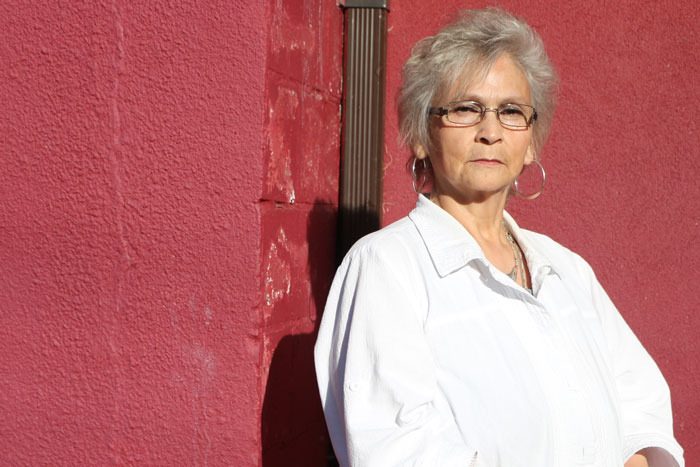A routine check-up at the hospital has turned into a nightmare for a Prince Rupert woman.
A month-and-a-half after having an endoscopy to inspect her nose and throat, Joan Dudoward received a letter from Northern Health stating that the endoscope used at the Prince Rupert Regional Hospital was not cleaned properly.
From April until the end of June 2016, the endoscope, which is a flexible tube with a light and a camera used in nonsurgical procedures, was being cleaned with the wrong cleaning solution to disinfect the equipment. There were 104 patients affected and Dudoward was one of them.
“I was majorly stressed out,” she said in an exclusive interview with the Northern View. “I’m a cancer survivor. I try to keep my health up for my mom, I’m a caregiver for a 95-year-old woman.”
Dudoward had gone to the Prince Rupert hospital for an endoscopy on June 29 at 3:30 p.m. after complaining to her physician about reoccurring plugged ears and a sore throat. She received the letter from Northern Health on Aug.24, which stated the error did not impact the diagnostic outcome of the tests and the process error has been corrected.
The letter also states that the BC Centre for Disease Control has been consulted and “the risk of a patient being exposed to a virus as a result of this process error is extremely low.” The contact number for the director of acute care services is offered in case she has any other questions or concerns. Dudoward has many.
She called to find out why the instrument wasn’t cleaned, what had happened and how many people had gone through the procedure before and after her. “She said she’s not permitted to tell me anything about this,” was the response Dudoward said she received.

The vice-president of medicine for the Northern Health authority, Dr. Ronald Chapman, was quick to respond to media inquiries and stressed the importance of transparency. He said, based on previous experience, once they realized the mistake had occurred they consulted the BC Centre for Disease Control as well as the Northern Health infectious disease specialist in Prince George.
“The risk for the patient is extremely low. We’re not concerned that it will at all have any negative impact on their health,” Dr. Chapman said. He added that it’s Northern Health’s policy to make patients aware even if the risk to them is low. “We believe it’s important to be open with those patients and to be fairly transparent so at least they are aware of the mistake. In this case, we don’t recommend any particular follow up or tests for the patients.”
This type of process error has happened before, Dr. Chapman confirmed. Not with the same scope, but he said there are many different endoscopes used and each are made by different manufacturers that have various recommendations on how to clean the equipment.
“The health sector is run by human beings and it’s fairly complex. If mistakes do happen what we encourage our staff to do is to make management aware so they can learn from that experience,” he said. “I’m happy to say where those mistakes have happened in our environment, a process has been put in place and we haven’t had any repetitions after some of those learning experiences.”
More answers from the Provincial Health Services Authority
Provincial Health Services Authority spokesperson Lesley Pritchard explained that from time to time health authorities consult with epidemiologists and microbiologists from the BC Centre for Disease Control to assess the risk of disease transmission when there is an error in the recommended cleaning procedure. The medical instrument itself is not often examined because “you can’t go back in time to determine when any particular microorganism might have contaminated the instrument,” she said.
Instead, BC Centre for Disease Control considers the type of medical instrument and whether it is used on the surface of the body or if it is more invasive and likely to cause bleeding.
The endoscope used for the nose and throat at the Prince Rupert hospital in this case was deemed low risk because it doesn’t have a hollow channel and only the surface of the scope could be affected. There are also no sharp pieces on the scope and the risk of blood contamination is low compared with other types of scopes used in biopsies.
The letter Northern Health sent to patients stated there was a process error during the cleaning steps, which was unclear and left a lot to the imagination. The Provincial Health Services Authority was more specific and clear in what had occurred.
“The descaler solution that was used in place of the high level disinfectant itself has very strong antimicrobial properties, so although an incorrect product was used for cleaning, the product was likely effective because the viruses of concern HIV, hepatitis B and C are very easily killed,” Pritchard said.
For the 104 patients that were affected by this incident, Dr. Chapman said their general practitioners have been notified and if they have any questions they can speak to them and the infectious disease specialist. They can also contact Northern Health’s Patient Care Quality Office to register a complaint.
For Dudoward, who had a bone marrow transplant in 2011 to battle leukemia, she is concerned and has already scheduled a meeting with her physician in early September.
“I’m thinking that my body is not going to be able to fight off infection like I was able to before the cancer because chemo takes a lot out of your body so this is like a bomb exploding in my life,” she said.
